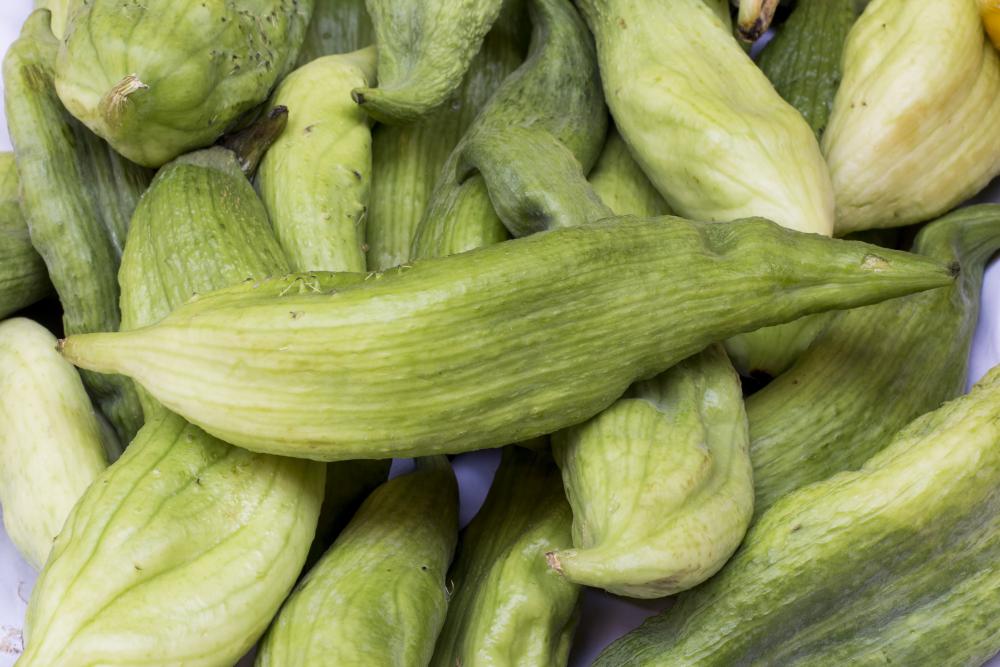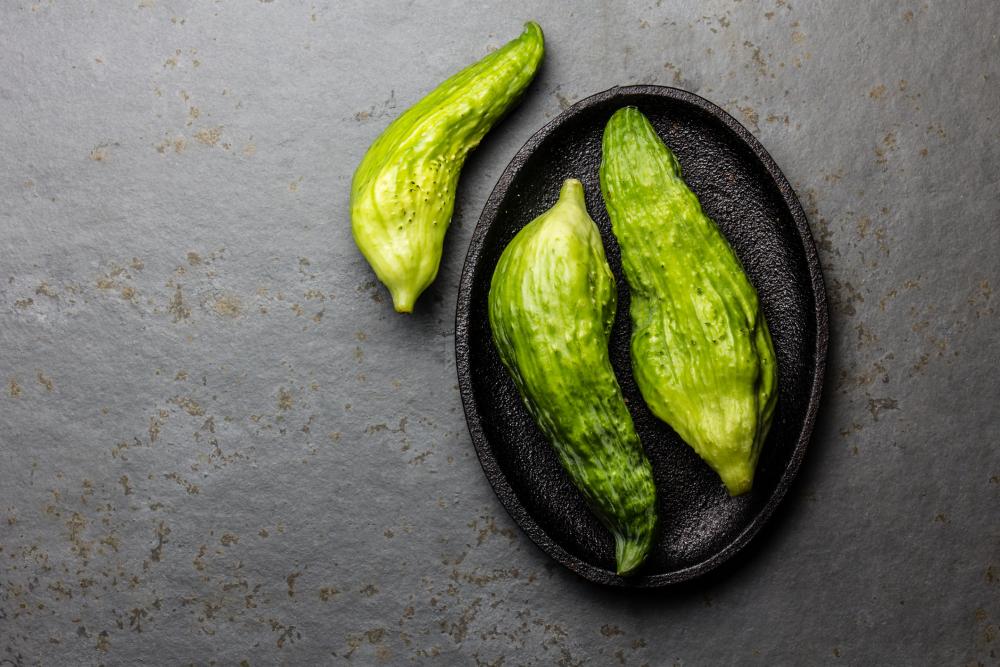Caihua Care – How To Grow And Harvest Slipper Gourd
Few vegetables capture one’s imagination, like the caihua. An exotic vegetable grown and cherished by the Aztecs. Apart from its cucumber texture and green bean flavors, this vegetable has a long history. When the weather got warm, and their taste buds got restless for new flavors, this was the go-to refreshment for the Peruvians. Whether you eat it fresh, cut it into a green salad, or cook it, caihua is as versatile as it is multi-flavored.
Growing caihua is as easy as growing cucumbers. It’s hassle-free and requires no prior experience in gardening. So if you want to add an exotic touch to your vegetable garden, you can try this ancient vegetable that has literally nourished civilizations. Read more to know how to grow, care for, and harvest caihua.
All About Caihua
A member of the cucumber family, caihua goes by many names. Sometimes people call it caigua, acocha, slipper gourd, stuffing cucumber, and wild cucumber among others. First cultivated by the Aztecs in Peru, it soon spread across South America and became a popular vegetable for all meals. Caihua doesn’t grow in the wild, and evidence from depictions left behind by the Aztecs indicate that it’s a cultivar.
The vines of caihua spread far and wide-reaching 36 feet if left unchecked. The leaves are light green with deep veins and serrated edges. Each leaf can reach about 10 inches long. Both the tender stems and slender leaves are just as edible as the soft-textured fruits of caihua. This probably accounts for the popularity of the vegetable along with its known high yield at any given season.
In the late spring, small flowers emerge. They’re usually white or greenish. They have an intoxicating fragrance, and they blend into the foliage. After pollination, the light green pods develop. By the time they mature, each fruit takes an elongated shape and grows to about 6 inches long. The ripe fruits are curved and look like fattened-up cucumbers or small gourds.
The caihua fruit is hollow inside. Under the light green skin is a thin layer of flesh and seeds at the core. The flesh is white or creamy yellow, and the seeds are black.
Caihua Uses and Benefits
Since caihua outdates modern medicine, one can safely wager that it had some medicinal uses besides being a staple on the Aztec menu. And because every part of the plant except for the seeds and roots were edible, then ancient medicine men and women had a field day with this vegetable. Here are some of these uses, both medicinal and non-medicinal.
- Managing Cholesterol: One of the main benefits of caihua is its ability to reduce the cholesterol absorbed by the body. Thanks to high concentrations of sitosterol-3-beta-D-glucoside, which the body mistakes for cholesterol, the levels of cholesterol in the blood reduce the more you eat caihua. This benefits the cardiovascular system and reduces heart diseases.
- Menopause Imbalances: Besides reducing cholesterol levels, caihua has the benefit of balancing triglycerides and lipids among women going through menopause.
- Food Source: As a food source, caihua grows in colder zones and high altitudes where fewer edible plants grow. People living in the Andes relied on caihua to survive throughout the cold months. You can stuff the vegetable just like stuffed zucchini or squash.
How to Grow Caihua
Because of its high resistance to diseases and pests, caihua grows successfully in many parts of Latin American and Europe. In addition, its seeds have a high success rate of germination. However, it’s rare to see the vegetable grown commercially outside of South America. So if you want to get a taste of this delicious vegetable, you’ll have to grow it in your own garden. You can order the seeds online then follow these easy steps to grow and cultivate caihua.
- Caihua grows in just about any zone. As long as you don’t get unpredictable frosts in the late spring, the plant will grow successfully in your garden.
- Start the seeds in the garden directly in the early spring in zones 6 and above, and for cooler zones, you can start it in mid-spring after the last frost. Ideal air temperatures are 77 degrees F and above.
- Choose a sunny spot in cold zones and a spot that gets partial shade in warm zones. Full shade means the plant will not fruit. Full sun exposure leads to wilting vines.
- Prepare the soil by turning up the top 10 inches and mixing in organic materials to improve drainage. Caihua grows in loamy and sandy soil. Clay soil with good drainage is good as well.
- Install a trellis next to the seed. You can use one wide trellis for two vines or plan to have a trellis for each plant. Keep in mind that the vine grows to 20 feet high, so choose an appropriate trellis. You should install the trellis before planting the seeds to avoid disturbing the soil.
- The seeds have a 95 percent germination success rate and don’t need treatment before planting.
- Plant the seeds one inch deep into the soil and cover them with a thin layer of soil. Don’t firm the soil.
- Space the seeds between 3 to 4 feet apart to prevent the roots of different vines from competing.
- Water the soil to get it thoroughly moist but not overly wet. Keep the soil moist until the seeds germinate.
Caihua Care
As an easy-to-grow vegetable, caihua doesn’t need much caring or constant attention. Once in a while, you’ll need to spend a few hours training the tender vines on the trellis and keeping the vines from overlapping. Pruning is also essential to ensure that the vines behave. This pays dividends in terms of the crop. Watering and feeding are also essential for the success of the vegetable.
Soil
In theory, caihua grows well in any type of soil. However, for the best crop and to avoid growing problems such as root rot, you should amend the soil to make it as close to loamy or sandy as possible. If this means you should dump a lot of sand or perlite into the clay soil to loosen its texture, so be it. The goal is to make the soil well-drained since the roots of the vine are sensitive to being waterlogged. As for the soil pH, it should be slightly acidic or as close to neutral. Alkaline soil can have a damaging effect on the roots and the vine. Your soil kit reading should be anything between 5.0 and 7.0. Adding organic compost and aged manure will raise the acidity levels of the soil to the desired mark.
Watering
Caihua prefers the soil to be constantly moist. This can be tricky as the temperature rises in the summer, and the sun bears down on the plants. On average, you’d need to provide one inch of water per week. As the vine grows and expands, its roots dig deeper into the soil. So you need to water the vine deeply to reach the roots faster. The best time to water the caihua is in the early morning. The late spring and summer are the times when the vine needs the most water. Keep the plant hydrated to avoid problems with flowering and fruiting.
Fertilizer
The more nutrients in the soil, the better crop you’ll get from each vine. Before you plant the seeds, mix in a good amount of aged manure and organic materials. This has the dual benefit of enriching the soil with a slow-release fertilizer that doesn’t burn the roots nor trigger a fast growth spurt. It also improves the aeration and drainage of the soil. Once the vines start climbing the trellis or support system, apply a balanced fertilizer once every 2 weeks. When you see the flower buds emerging, switch to a phosphorus-high fertilizer to encourage more blooms. After the flowers get pollinated, go back to a balanced 10-10-10 fertilizer. Side dress with organic compost until the fruits are ripe.
Support
Your caihua vines need a support system in place before they even sprout out of the ground. Although you can allow the vines to crawl horizontally, that makes maintaining and caring for the fruits a little harder. Not to mention that the fruits that come in contact with the soil become more prone to diseases. So before you sow the seeds, install a trellis or plant the vegetable near a fence. A trellis is a better option since you have more control over where to install it. Each vine should have its own trellis, although you can use a wide trellis to accommodate two vines next to each other.
Companion Plants
As with other plants you grow in your garden, not all plants play nice together. Some get along fine and even develop symbiotic relationships, while others start competing for resources from day one. In the case of caihua, you can plant the vine along with tomatoes, oregano, onions, dill, peas, beans, and radish. The legumes fix nitrogen in the soil, which makes fertilizing the soil redundant. Oregano and onions are natural pest repellents and protect neighboring plants from wildlife and bugs.
That said, you should never plant melons, potatoes, or sage near the caihua vines. Potatoes especially are aggressive underground and might strangle the roots of the vines.
Pests and Diseases
For a hardy and disease-resistant plant, caihua still gets its fair share of health problems. As a member of the cucumber family, it is a target for the cucumber beetle. It’s a small beetle that gets active as soon as the temperature of the soil rises above 55 degrees F. If it attacks the vine at an early stage, it could lead to stunted growth and poor crops. Symptoms include damaged vines and leaves and scars on the fruits. Monitor your vines regularly as the weather warms up. If you see the beetle or any of its telltale scars on the plant, fill a bucket with soapy water and go hunting for the bug among the leaves and vines. Drown every battle you find. Do this a few times a week until you exterminate the pest without prejudice.
The diseases that afflict caihua are powdery mildew and downy mildew. Both are fungal infections caused by overwatering, high humidity, and poor air circulation among the vines. Remove infected branches and leaves and spread the healthy branches across the trellis to expose the inner branches to sunlight.
Harvesting and Storing Caihua
You can harvest caihua when the fruit is fairly young. The small caihua is fleshy and can be eaten raw or pickled. Harvesting young caihua encourages the vine to flower and produce more fruits per season. If you allow the fruit to mature and reach its full length, it becomes hollow. Hollow caihua is good for stuffing.
Pick the fruits by hand. Hold the fruit near the stem and snip the stem off with shears or sharp scissors. Don’t twist or yank the fruit off since that could weaken the support system.
Fresh caihua can be stored in the fridge. They have the same shelf life as cucumbers.


